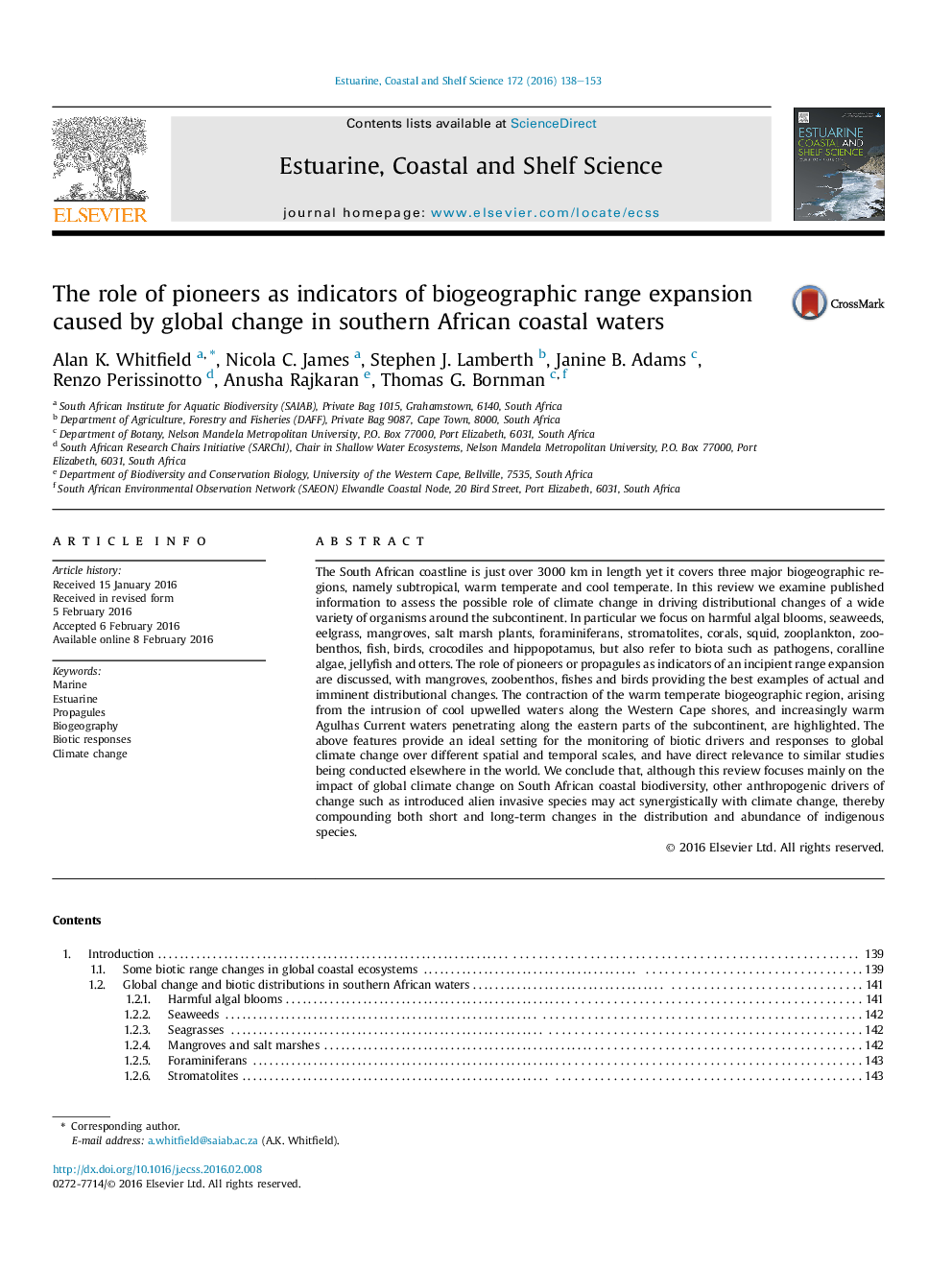| Article ID | Journal | Published Year | Pages | File Type |
|---|---|---|---|---|
| 4539317 | Estuarine, Coastal and Shelf Science | 2016 | 16 Pages |
The South African coastline is just over 3000 km in length yet it covers three major biogeographic regions, namely subtropical, warm temperate and cool temperate. In this review we examine published information to assess the possible role of climate change in driving distributional changes of a wide variety of organisms around the subcontinent. In particular we focus on harmful algal blooms, seaweeds, eelgrass, mangroves, salt marsh plants, foraminiferans, stromatolites, corals, squid, zooplankton, zoobenthos, fish, birds, crocodiles and hippopotamus, but also refer to biota such as pathogens, coralline algae, jellyfish and otters. The role of pioneers or propagules as indicators of an incipient range expansion are discussed, with mangroves, zoobenthos, fishes and birds providing the best examples of actual and imminent distributional changes. The contraction of the warm temperate biogeographic region, arising from the intrusion of cool upwelled waters along the Western Cape shores, and increasingly warm Agulhas Current waters penetrating along the eastern parts of the subcontinent, are highlighted. The above features provide an ideal setting for the monitoring of biotic drivers and responses to global climate change over different spatial and temporal scales, and have direct relevance to similar studies being conducted elsewhere in the world. We conclude that, although this review focuses mainly on the impact of global climate change on South African coastal biodiversity, other anthropogenic drivers of change such as introduced alien invasive species may act synergistically with climate change, thereby compounding both short and long-term changes in the distribution and abundance of indigenous species.
